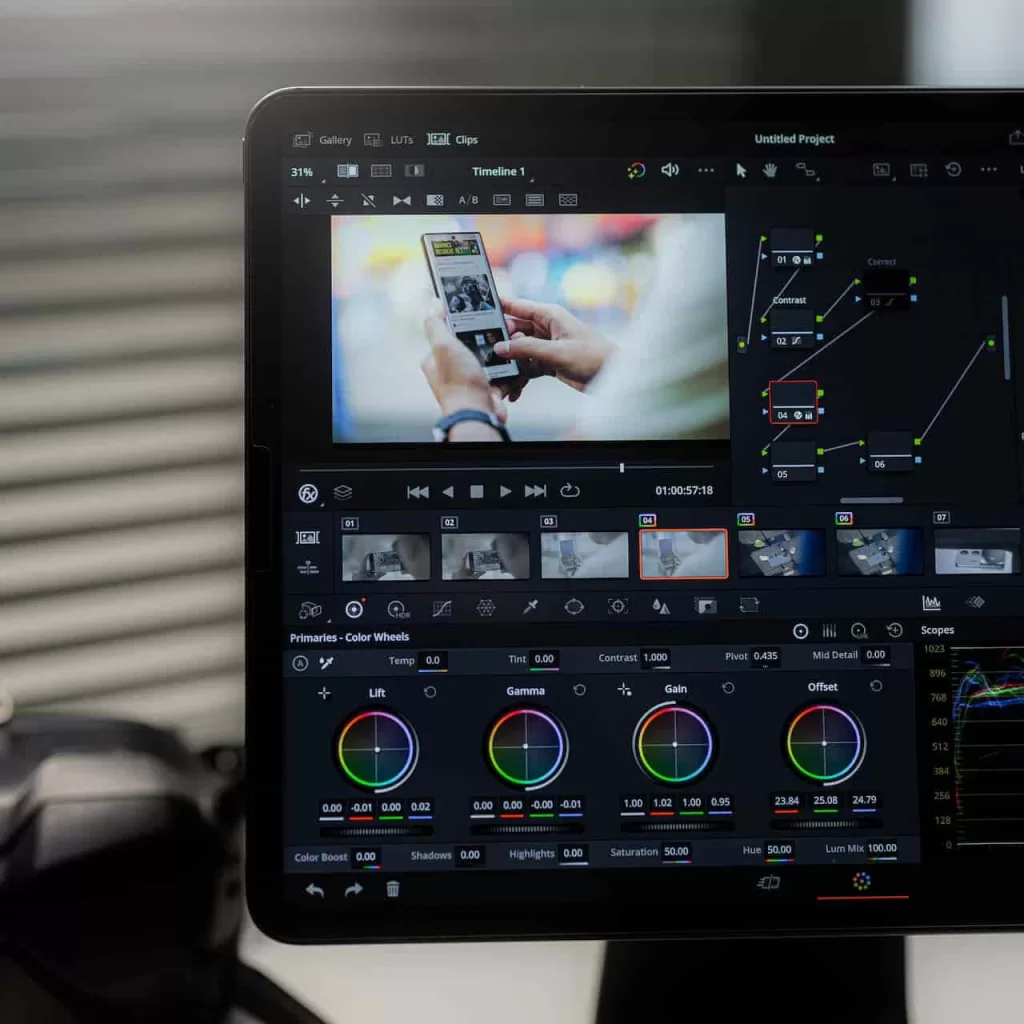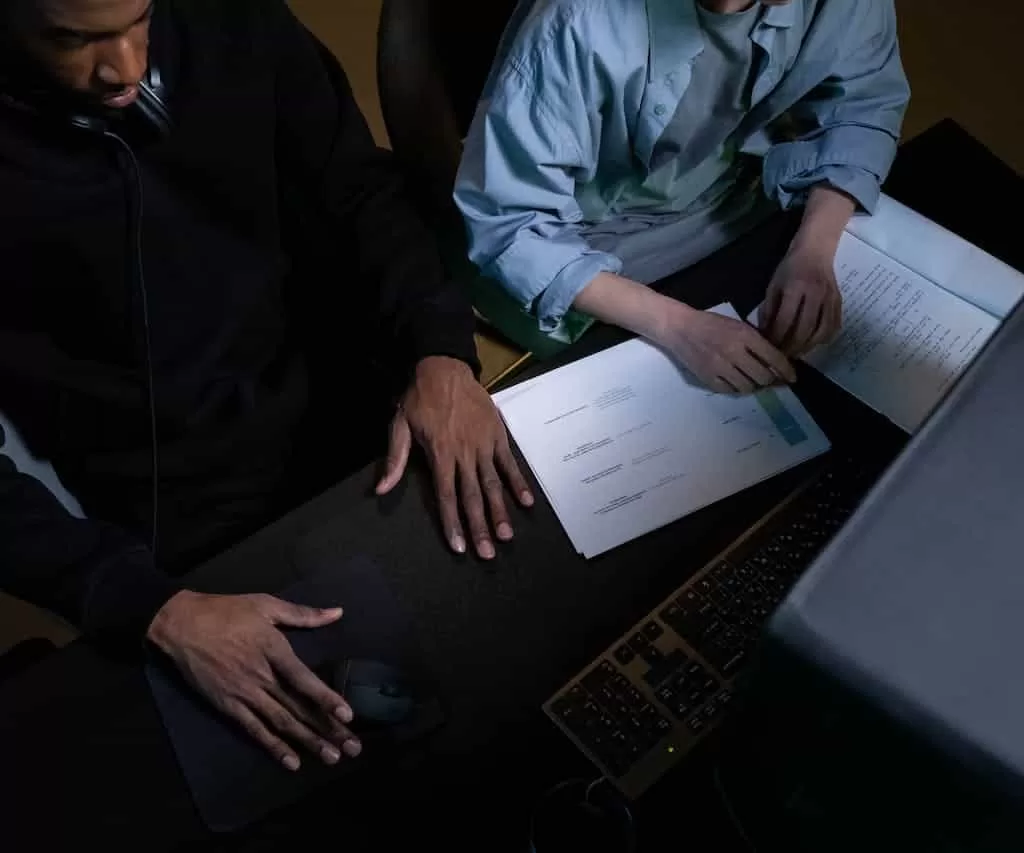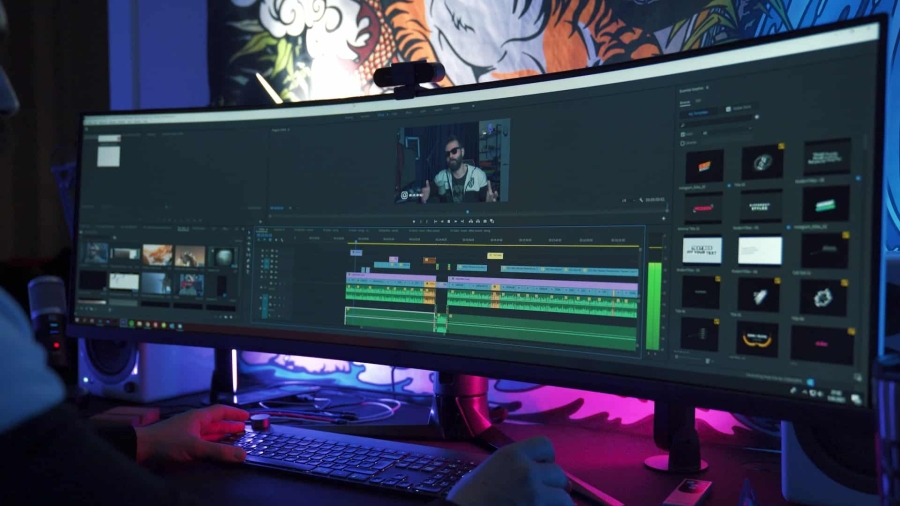In the dynamic world of video production, the role of a video editor is crucial in bringing the creative vision to life. So, we have compiled top Video Editor Interview Questions and Answers which are comprehensive for any kind of scenario. Aspiring video editors often find themselves facing a barrage of challenging questions during interviews. Whether you’re a seasoned professional or a newcomer to the industry, it’s essential to be well-prepared for these video editor interview questions. In this blog post, we’ll explore some common video editor interview questions and provide expert answers to help you ace your next interview.
Can you walk us through your video editing process? – Video Editor Interview
Answer: I typically start by thoroughly reviewing the raw footage to understand the project’s narrative and tone. Then, I create a rough cut, ensuring the pacing aligns with the director’s vision. I collaborate closely with other team members, incorporating feedback to refine the edit. Finally, I focus on adding transitions, effects, and sound design to enhance the overall viewing experience.
What video editing software are you most comfortable using, and why?
Answer: I am proficient in industry-standard software such as Adobe Premiere Pro and Final Cut Pro. These platforms offer robust features, a user-friendly interface, and compatibility with various file formats. My choice depends on the project requirements, as both software options provide the tools needed to deliver high-quality edits.
How do you stay updated on the latest video editing trends and technologies?
Answer: I am an avid learner and stay connected with online communities, attend industry conferences, and subscribe to relevant blogs and YouTube channels. Additionally, I actively participate in online forums and engage in discussions with fellow professionals. This keeps me informed about the latest trends, software updates, and emerging technologies in the field of video editing.
Describe a challenging project you’ve worked on and how you overcame obstacles.
Answer: One notable project involved tight deadlines and a large volume of footage. To manage this, I created a detailed timeline, prioritized tasks, and maintained open communication with the team. Additionally, I utilized efficient editing techniques, such as proxy editing, to streamline the workflow without compromising on the quality of the final product.
How do you handle constructive criticism of your work?
Answer: Constructive criticism is invaluable for growth. I approach it with an open mind, viewing it as an opportunity to refine my skills. I actively seek feedback throughout the editing process and make necessary adjustments to align with the project’s objectives. This collaborative approach ensures the final product meets or exceeds expectations.
What is your approach to storytelling through video editing?
Answer: Storytelling is at the heart of video editing. I focus on creating a seamless narrative flow by establishing a strong connection between shots, maintaining pacing, and using visual and auditory elements to evoke the desired emotions. I pay meticulous attention to detail, ensuring that each edit serves the overarching story.
How do you handle tight deadlines and high-pressure situations?
Answer: I thrive under pressure and prioritize tasks strategically. To meet tight deadlines, I break down the project into manageable segments, delegate responsibilities when possible, and maintain clear communication with the team. Additionally, I am well-versed in time-saving techniques within my editing software, allowing me to deliver quality work within the specified timeframe.
How do you collaborate with other team members, such as directors, cinematographers, and sound designers?
Answer: Collaboration is key to a successful project. I actively participate in pre-production meetings to align with the director’s vision. During editing, I maintain open communication with cinematographers to understand the intended visual style and work closely with sound designers to synchronize audio elements seamlessly. This collaborative approach ensures that all creative elements harmonize to tell a compelling story.
Can you share an example of a project where you had to think outside the box creatively?
Answer: In a documentary project, I faced the challenge of presenting a complex narrative in a visually engaging way. To address this, I experimented with non-linear storytelling techniques, incorporated unique visual effects, and used sound design to enhance the storytelling. This unconventional approach added depth to the project and garnered positive feedback from both the audience and the project stakeholders.
How do you approach color grading, and how does it contribute to the overall storytelling?
Answer: Color grading is a crucial aspect of video editing that significantly impacts the mood and tone of a piece. I approach color grading by first understanding the emotional beats of the story.

I use color to evoke specific emotions and create visual consistency throughout the project. Whether it’s enhancing the warmth of a scene or creating a cool, desaturated look, color grading plays a pivotal role in conveying the intended atmosphere.
What is your experience with incorporating visual effects (VFX) into your edits? – Video Editor Interview
Answer: I have experience working with various visual effects tools and techniques. When incorporating VFX, I collaborate closely with VFX artists to seamlessly integrate effects into the footage. I ensure that visual effects enhance the narrative without overshadowing the storytelling. This involves meticulous attention to detail, color matching, and frame-by-frame precision to create a cohesive and realistic visual experience.
How do you adapt your editing style to different genres, such as documentaries, commercials, or narrative films?
Answer: Each genre has its unique storytelling requirements. For documentaries, I focus on creating a natural, authentic flow that captures real moments. In commercials, I emphasize concise storytelling and dynamic visuals to engage the audience quickly. For narrative films, I pay attention to character development, pacing, and visual continuity to immerse viewers in the fictional world. Adapting my editing style to the specific needs of each genre is essential for delivering impactful and resonant content.
What steps do you take to ensure your edits are accessible to diverse audiences?
Answer: Accessibility is a priority in modern video editing. I ensure that my edits consider diverse audiences by incorporating subtitles for the hearing impaired, using clear visual cues for important information, and optimizing for various screen sizes and resolutions. By keeping accessibility in mind, I aim to make the content inclusive and enjoyable for a wide range of viewers.
How do you manage large-scale projects with multiple editors or collaborators? – Video Editor Interview
Answer: Communication and organization are paramount in managing collaborative projects. I establish clear communication channels, set project milestones, and use collaborative tools within the editing software to track changes and maintain version control. Regular team meetings and feedback sessions ensure that everyone is on the same page, contributing to a cohesive and unified final product.
Can you share an experience where you had to troubleshoot technical issues during the editing process?
Answer: Technical issues are inevitable, and problem-solving is a crucial skill. In a recent project, I encountered compatibility issues with a specific file format. I quickly researched and implemented a workaround, ensuring a smooth editing process. Being familiar with various troubleshooting techniques, staying updated on software updates, and having a reliable backup system are all essential components of managing technical challenges effectively.
How do you approach storytelling in short-form content, such as social media videos or advertisements?
Answer: Short-form content demands a concise and impactful storytelling approach. I focus on capturing attention within the first few seconds, ensuring that the narrative is clear and compelling. Every shot and edit must serve the primary message, and pacing is crucial to maintain viewer engagement in a limited time frame.
What role does music play in your editing process, and how do you select the right soundtrack for a project?
Answer: Music is a powerful tool for enhancing emotions and reinforcing the narrative. I carefully select soundtracks that complement the tone of the video, considering factors like tempo, mood, and cultural relevance. Collaborating with composers or music libraries helps to find or create the perfect soundtrack that enhances the viewer’s emotional connection to the content.
How do you manage revisions and client feedback during the editing process?
Answer: Clear communication is essential when handling revisions and feedback. I actively involve clients throughout the editing process, providing regular updates and draft reviews. By understanding their vision and expectations early on, I minimize the need for major revisions. When feedback is received, I approach it with an open mind, addressing specific concerns and ensuring the final edit aligns with the client’s goals.
What is your strategy for maintaining creativity and avoiding burnout during long editing sessions?
Answer: Maintaining creativity during extended editing sessions is crucial. I incorporate short breaks to refresh my mind, practice mindfulness techniques, and listen to music or take a walk to reset. Additionally, varying the types of projects I work on helps prevent monotony, keeping the creative juices flowing. Balancing intensity with breaks is essential for sustained creativity and avoiding burnout.
Can you share an example of a project where you had to adapt to unexpected changes or challenges?
Answer: In a fast-paced documentary project, unexpected weather conditions disrupted our original shooting plan. To adapt, I collaborated with the production team to devise a new strategy, reshooting scenes with available resources. This experience reinforced the importance of flexibility in the editing process, allowing me to adapt to unforeseen challenges without compromising the quality of the final product.
How do you approach organizing and managing a large volume of media files efficiently?
Answer: Organization is the backbone of efficient video editing. I use a systematic file naming convention, organize assets into clearly labeled folders, and utilize metadata tagging within the editing software. This meticulous approach streamlines the editing process, reduces search time, and ensures a smooth workflow, especially when dealing with extensive media libraries.
What is your experience with incorporating motion graphics and animation into video edits?
Answer: Motion graphics and animation can add a dynamic and engaging dimension to video edits. I collaborate with motion graphic designers to seamlessly integrate graphics that enhance the storytelling. Whether it’s lower thirds, transitions, or visual effects, I ensure that motion graphics are used judiciously to convey information effectively without overwhelming the viewer.
How do you approach balancing creativity with client expectations and project constraints?
Answer: Balancing creativity with client expectations requires effective communication and a deep understanding of the project’s goals. I start by aligning with the client’s vision in pre-production discussions. Throughout the editing process, I provide regular updates and seek feedback to ensure alignment. If creative differences arise, I present alternative solutions that address both artistic considerations and client requirements, fostering a collaborative and successful outcome.
How do you handle working with footage that is not of the highest quality? Video Editor Interview
Answer: Working with lower-quality footage is a common challenge. I employ various techniques such as color correction, noise reduction, and strategic editing to enhance the visual quality. If necessary, I communicate with the production team to explore potential reshoots or alternative solutions to improve the overall visual appeal of the final edit.
What role does storytelling play in video editing, and how do you ensure a cohesive narrative throughout the project?
Answer: Storytelling is the backbone of effective video editing. I focus on maintaining a clear narrative structure by establishing a compelling beginning, middle, and end. Each edit serves to progress the story, and I pay attention to continuity, ensuring that the audience remains immersed in the narrative without distraction.
How do you stay organized when working on multiple projects simultaneously?
Answer: Managing multiple projects requires meticulous organization. I use project management tools, create detailed schedules, and prioritize tasks based on deadlines and project complexities. Regular check-ins with the project team help ensure that each project is progressing smoothly, and I allocate dedicated time for each to maintain focus and quality.

Can you share your experience with color theory and how it influences your color grading decisions?
Answer: Color theory is fundamental to effective color grading. I consider the emotional impact of colors and their symbolism in different cultures. Warm tones may evoke a sense of comfort, while cooler tones might create a more somber mood. By applying color theory principles, I enhance the visual storytelling and contribute to the overall emotional resonance of the project.
How do you approach editing for different platforms, such as YouTube, Instagram, and television?
Answer: Each platform has its unique specifications and audience expectations. For YouTube, I focus on engaging content within the first few seconds to capture viewers’ attention. Instagram requires concise storytelling due to shorter attention spans. Television editing may involve adhering to specific broadcast standards. Adapting the editing style to suit each platform ensures the content is optimized for the intended audience and platform requirements.
What role does feedback play in your editing process, and how do you handle conflicting feedback from various stakeholders?
Answer: Feedback is invaluable for refining the editing process. I actively seek input from various stakeholders, including directors, producers, and clients. In the case of conflicting feedback, I initiate open discussions to understand each stakeholder’s perspective. Through clear communication and compromise, I aim to find solutions that address concerns while maintaining the integrity of the edit.
How do you keep up with the latest video editing trends and industry updates?
Answer: Staying current with industry trends is essential. I regularly follow industry publications, blogs, and forums to stay informed about the latest advancements. Attending industry conferences, workshops, and webinars also provides networking opportunities and insights into emerging technologies. This commitment to continuous learning ensures that my skills remain relevant in a rapidly evolving field.
What role does pacing play in your editing decisions, and how do you determine the appropriate rhythm for a project?
Answer: Pacing is a critical element in video editing. I tailor the pacing to the project’s genre, tone, and intended emotional impact. Action sequences may require faster cuts to build excitement, while dramatic moments benefit from slower, deliberate pacing. Through a combination of visual and auditory cues, I create a rhythmic flow that enhances the viewer’s engagement with the content.
“CONFIDENCE”
Your video editor interview depends 40% on these above questions and 60% on your confidence in how fluently you present your knowledge. Don’t panic at all, there are so many tricks if you follow then you can qualify for your video editing interview without much advanced knowledge.
As you prepare for your video editor interview, keep in mind the diversity of topics and skills that may be covered. These additional questions address specific areas such as handling lower-quality footage, adapting to different platforms, and managing conflicting feedback. Tailor your responses to reflect your unique experiences and strengths, and approach the interview with confidence and a passion for storytelling through video editing. Good luck!

